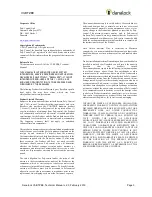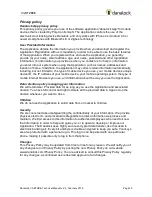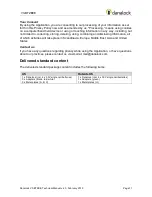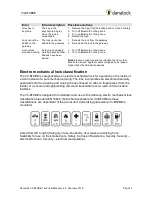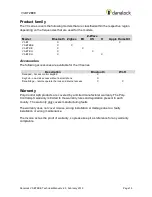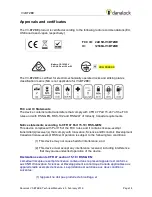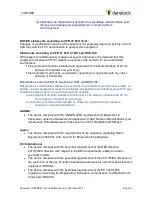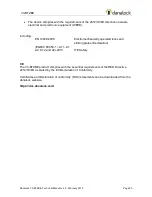
V3-BTZBEE
Danalock V3-BTZBE, Technical Manual v.2.3, February 2019
Page 9
The V3-BTZBE unit cannot be turned off after installation, so any doors installed with the
V3-BTZBE etc. must not operate near health care facilities when any regulations posted in
these areas prohibit the use of wireless phones or two-way radios. Hospitals and health
care facilities may be using equipment that could be sensitive to external RF energy.
Potentially Explosive Atmospheres
The V3-BTZBE unit cannot be turned off after installation, so any building installed with
V3-BTZBE etc. must not be located in an area with a potentially explosive atmosphere and
obey all signs and instructions not to use V3-BTZBE in such areas. Sparks in such areas
could cause an explosion or fire resulting in bodily injury or even death.
Areas with a potentially explosive atmosphere are often, but not always marked clearly.
Potential areas may include: fueling areas (such as gasoline stations); below deck on
boats; fuel or chemical transfer or storage facilities; areas using liquefied petroleum gas
(such as propane or butane); areas where the air contains chemicals or particles (such as
grain, dust, or metal powders); and any other area where it would normally be advisable
not to
install the V3-BTZBE.
Specific Human Absorption Rates (SAR)
THE V3-BTZBE UNIT IS NOT DESIGNED TO BE WORN ON A PERSON’S BODY. AS
SUCH, BODY WORN TEST POSITIONS FOR THE V3-BTZBE UNIT
ARE NOT REQUIRED BY EITHER THE IEC 62311 FOR BLUETOOTH LE OR
FCC/IEEE/ICNIRP REQUIREMENTS FOR BLUETOOTH LE.
The V3-BTZBE unit is not intended for handheld use or to be worn on the body. A
minimum separation of eight (8”) inches (20 cm) is to be maintained between the V3-
BTZBE and any persons’ body. Additional information on Specific Absorption Rates (SAR)
.
Battery Safety Information
Adhere to the following guidelines to avoid the risk of fire or explosion:
1. Dispose of the used battery according to the instructions provided with the battery.
2. Do not drop, puncture, disassemble, mutilate, or incinerate the battery.
3. Touching both terminals of a battery with a metal object will short circuit the battery. Do
not carry batteries loosely if the contacts may touch coins, keys, and other metal
objects (such as in pockets or bags).
4. Do not stack batteries taken out of the carry case.
5. Do not heat the batteries to try to rejuvenate their charge.
6. Do not exceed the temperature ranges or other environmental conditions specified by
the battery manufacturer.
7. Never use the V3-BTZBE without the battery cover installed.



